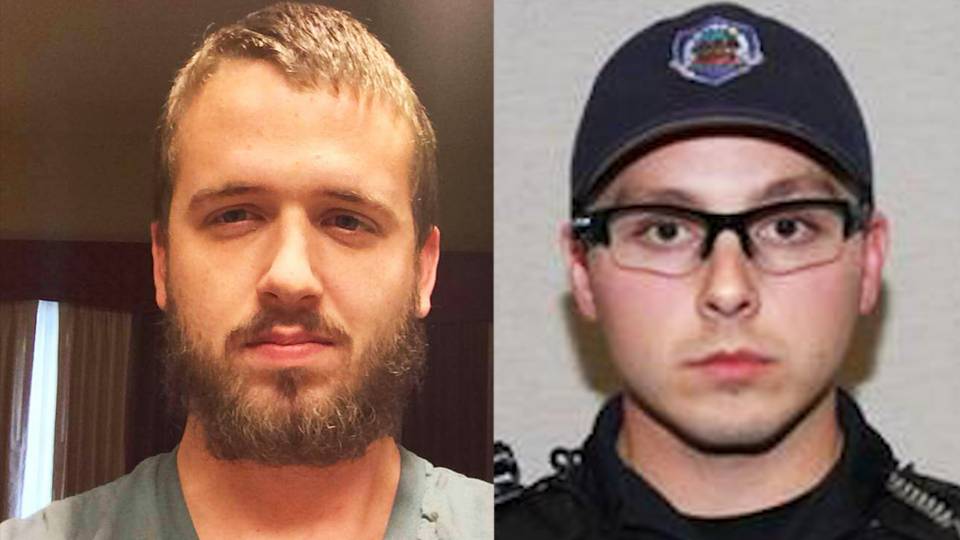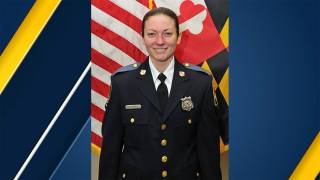Video Shows Daniel Shaver Pleading for His Life Before Being Shot by Officer
Newly released body camera footage shows a police officer shooting an unarmed man in an Arizona hotel after the man sobbed and pleaded with officers not to shoot him.
The graphic video, which was released after a jury acquitted the officer of murder and manslaughter charges, stoked outrage on social media and renewed calls for reforms in law enforcement.
“This, to me, is the most horrific shooting I’ve ever seen,” Mark Geragos, a lawyer for the widow and the 5- and 8-year-old daughters of the man, Daniel Shaver, 26, said in an interview. Mr. Geragos, who said he had seen thousands of body camera videos, said the footage was evidence of “the criminal justice system at its worst.”
On Jan. 18, 2016, six officers were called to a La Quinta Inn and Suites in Mesa, Ariz., after guests reported seeing a man with a gun in the window of a fifth-floor room. The video showed Mr. Shaver and a woman walking into a hallway as Philip Brailsford, a two-year veteran of the Mesa Police Department who was wearing the body camera, trained an AR-15 rifle on them.
This is the gun fmr Mesa Ofc Phil Brailsford used to shoot unarmed man. "You're fu**ed" etched on gun. Officer fired pic.twitter.com/C9fooTSebR
— Andrew Hasbun (@andrewhasbun) March 29, 2016
Another officer can be heard ordering them to get on the floor and threatening to shoot if they do not comply.
“If you make a mistake, another mistake, there is a very severe possibility you’re both going to get shot,” the officer says in the video. He shouts at Mr. Shaver, “If you move, we are going to consider that a threat, and we are going to deal with it, and you may not survive it.”
“I’m sorry,” Mr. Shaver says at one point. “Please do not shoot me,” he says at another.
The officer’s commands at times seemed contradictory.
“Do not put your hands down for any reason,” he tells Mr. Shaver. “Your hands go back in the small of your back or down, we are going to shoot you, do you understand me?”
“Yes, sir,” a tearful Mr. Shaver responds.
But immediately after, the officer commands, “Crawl towards me,” prompting Mr. Shaver to lower his hands to the floor and begin moving toward the camera.
A few seconds after beginning to crawl, Mr. Shaver twists slightly to his right, his elbow pointing upward. As someone shouts, “Don’t!” Officer Brailsford begins firing.
During his trial, Officer Brailsford testified that he had fired five times, The Arizona Republic reported.
The police later learned that Mr. Shaver, who was from Granbury, Tex., had been in his room showing off a pellet gun, which he used for his job in pest control, before being summoned by officers into the hallway. A witness testified that Mr. Shaver had been drinking.
A police report by an officer who reviewed the footage offered two possible explanations for why Mr. Shaver had bent his arm, the movement before the gunfire. It was “a very similar motion to someone drawing a pistol from their waist band,” the officer wrote, according to The Atlantic — but it “was also consistent with attempting to pull his shorts up as they were falling off.” No weapon was found on Mr. Shaver.
The Police Department fired Officer Brailsford two months after the shooting.
The jury deliberated for less than six hours before acquitting him. The acquittal came the same day that a judge in South Carolina sentenced Michael T. Slager, a white police officer, to 20 years in prison for the 2015 shooting of an unarmed black motorist, Walter L. Scott.
The South Carolina case was one of a number of fatal police shootings, often of black men, that have set off outrage in recent years. In Arizona, both the officer and the man who was killed were white.
Reactions to the Arizona video were swift and furious. Civil rights activists, celebrities and athletes described the shooting as an execution and denounced what they called a lack of accountability. Some highlighted a threatening profanity Officer Brailsford had etched onto the weapon he used to shoot Mr. Shaver, a fact the judge did not allow to be presented at trial.
Michael Piccarreta, Officer Brailsford’s lawyer, said in an interview on Saturday that his client’s actions were consistent with his training.
“Mr. Shaver certainly didn’t deserve to die that night, but the information projected to the outside world that night was one of danger,” Mr. Piccarreta said. “I think if people knew the full story, everyone would still be sad, everyone would be upset, but the vitriolic anger might be calmed a bit.”
Mr. Piccarreta also pointed out that the voice on the video, which he said was “harsh” and “threatening,” belonged to another officer, Sgt. Charles Langley, who testified at the trial that it was his voice heard on the video.
Chuck Wexler, the executive director of the Police Executive Research Forum, said Officer Brailsford’s caution when entering the hotel was justified, given the 911 call. But once officers were in the hallway, Mr. Wexler said, the footage indicated that Mr. Shaver was not a threat.
“I saw the individual doing everything he could to comply with what the officer was asking,” he said. “And so the officer’s actions then were inexplicable.”
Eugene O’Donnell, a former police officer and a professor at John Jay College of Criminal Justice, said the crux of the case was the impossibility of knowing what Officer Brailsford was thinking.
“What people as humans will see is someone drunk and emotionally distraught,” Mr. O’Donnell said, referring to Mr. Shaver. “The police will read that differently. In some sense it’s an argument without end: The police are just going to add this up a different way.”






















